Which pipes for heating are better: we design the ideal
The efficiency of the climate network directly depends on the chosen boiler and models of the used radiators. However, you need to think about which pipes are better to use for heating, because they affect the reliability of the engineering system and its durability. Here the determining factor should not be the price, but completely different criteria.
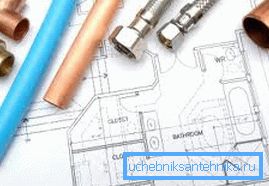
Factors affecting the choice of pipes
Before you start talking about which pipe is better for heating, you need to figure out what influences the choice of a particular material used to install the heating system.
Factors influencing the choice of material for pipelines are outlined in the table below.
| Factor | Description |
| The method of organization of the coolant current | There are heating networks with forced circulation of liquid and natural (due to the difference in temperature and density of the water in the pipes). In the first case, the pressure of the coolant is higher, because the pipes must be stronger. |
| Installation method | Pipes can be mounted in an open way and bricked into the walls or floor. For example, the radial distribution of heating pipes provides for their masking under the subfloor, therefore they should not be subject to corrosion and have detachable connections. Here the choice in favor of metal-plastic is quite obvious. |
| Temperature index | The type of pipes used also depends on the temperature to which the liquid in the boiler is heated. If the gas heater is able to work with any system, then the solid-fuel unit heats the coolant to very high temperatures, therefore it is recommended to use only steel pipelines with it. |

Consider the main technical characteristics of steel and plastic pipes, since it is between them in most cases a choice is made.
Varieties of pipes for heating systems
Steel
The main advantages of these products are the highest strength, reliability and the ability to transport liquid with a very high temperature. Installed piping is almost impossible to damage as a result of external influence.
Note! The advantage of steel is also in the fact that the parts made of it have a low coefficient of thermal expansion, therefore, when installing the heating system, it is not necessary to embed special compensators in it.
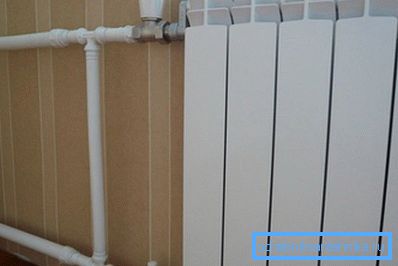
However, this, unfortunately, the positive properties of steel pipes end.
The following is a list of difficulties you may encounter when using this material:
- Installation difficulty. At installation of a heating network from steel pipes it is necessary to use gas welding. If you do not have the appropriate skills and the necessary equipment, there is no question of installing your own climate system. In addition, during welding, there is a high risk of damage to the decorative decoration of the walls or floor. Therefore, it is advisable to install the pipes before the start of finishing work. Otherwise, it is better to consider the option of using plastic.
- Susceptibility to corrosion. Carbon steel is strongly rusting under the influence of moisture and air. Steel pipes must not be brickled in concrete. On the other hand, with the constant presence of coolant inside them and the periodic renewal of the protective paint layer, they can last more than 50 years.
- Large thermal conductivity. This factor can be viewed both positively and negatively. Steel pipes laid in the room contribute to its additional heating. But with open external laying, pipelines must be insulated without fail, otherwise you will lose most of the thermal energy of the coolant unproductive.

As for the cost, it is quite affordable. This led to the wide distribution of these parts in the construction of engineering networks of residential buildings and commercial buildings.
Plastic
Having dealt with the metal, we turn to the polymer pipes.
The advantages of plastic parts used for the installation of heating systems are as follows:
- They are lightweight. They are easy to transport and install. Do not exert additional load on the structural elements of the building. For their fixing it is not necessary to use massive brackets and clamps.
- They have a perfectly smooth inner surface.. The coolant circulating through plastic pipes, flows without turbulence. In addition, due to this factor, mineral deposits do not form inside the parts (as in metal pipes), because the area of the internal cross section remains unchanged during the whole period of operation.
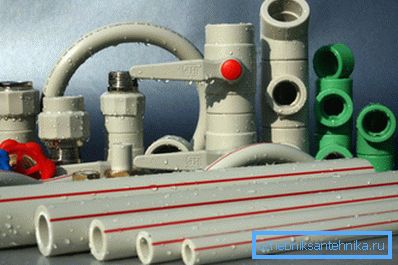
- Long service life. Although according to this indicator plastic pipes lag behind metal, the duration of their operation nevertheless remains above all praise and is more than 20 years.
- Ability to tolerate negative temperatures.Plastic pipes do not “defrost” even with a complete shutdown of the coolant supply for a long period in winter.
But not to mention the disadvantages:
- the need to use fittings for pipes for arranging turns (not for all types of products);
- poor maintainability - in case of violation of the integrity of the pipeline, the patch cannot be patched, it is necessary to completely replace the pipe section;
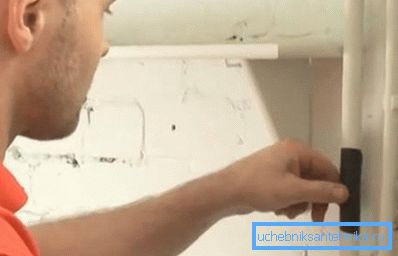
- low heat resistance - plastic is suitable only for transporting liquid, the temperature of which does not exceed 90 degrees (and for some types of polymers, and even less);
- low stiffness - under the influence of the coolant pipes can expand, warp, sag.
Note! The installation instructions for heating systems made of plastic pipes require the use of special devices that compensate for the strong thermal expansion of plastic. Instead, you can make rings or rectangles from the pipes, which allow you to avoid warping.
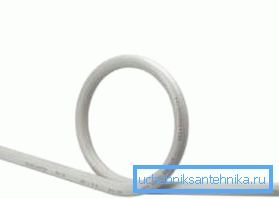
Most often for the manufacture of climate networks use the following types of polymers:
- polypropylene;
- cross-linked polyethylene;
- metal-plastic (polymer reinforced with a layer of metallized foil)
It is impossible to give an exact answer to the question which plastic pipes are better for heating. It all depends on individual needs and preferences.
Conclusion
After reading the above information, analyzing the technical characteristics of various materials in relation to your situation, you can easily choose the best pipes for heating. But care must be taken of the other components of the climate network. You can learn more about this from the video offered to your attention.